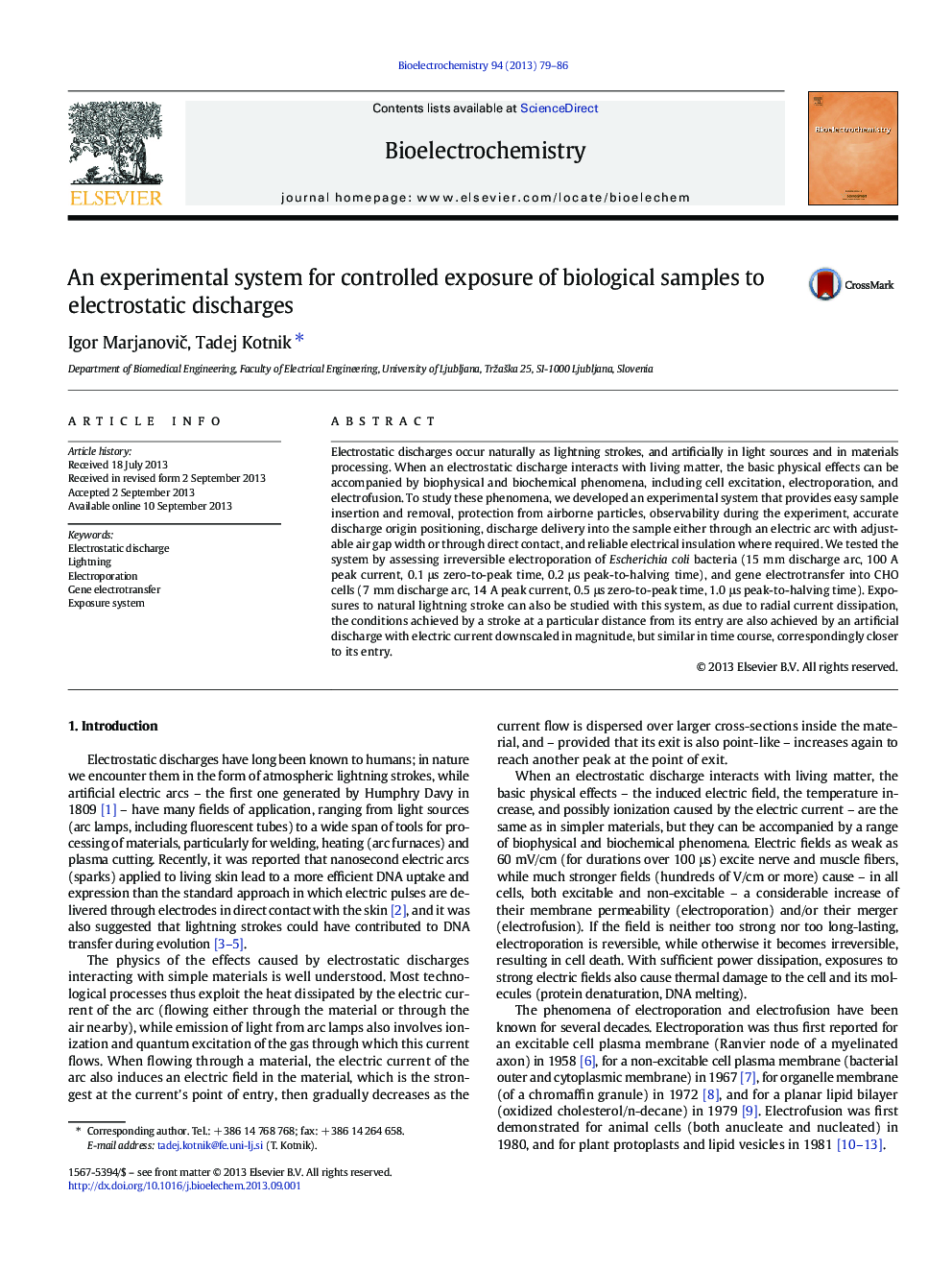| کد مقاله | کد نشریه | سال انتشار | مقاله انگلیسی | نسخه تمام متن |
|---|---|---|---|---|
| 1271245 | 1496918 | 2013 | 8 صفحه PDF | دانلود رایگان |

• We describe a system for exposing biological samples to electrostatic discharges.
• The system provides controlled, reproducible exposures with adjustable arc length.
• The system yielded irreversible electroporation of E. coli (15 mm arc, 100 A peak).
• The system yielded gene electrotransfer into CHO cells (7 mm arc, 14 A peak).
• Despite downscaling, radial current dissipation allows to study lightning effects.
Electrostatic discharges occur naturally as lightning strokes, and artificially in light sources and in materials processing. When an electrostatic discharge interacts with living matter, the basic physical effects can be accompanied by biophysical and biochemical phenomena, including cell excitation, electroporation, and electrofusion. To study these phenomena, we developed an experimental system that provides easy sample insertion and removal, protection from airborne particles, observability during the experiment, accurate discharge origin positioning, discharge delivery into the sample either through an electric arc with adjustable air gap width or through direct contact, and reliable electrical insulation where required. We tested the system by assessing irreversible electroporation of Escherichia coli bacteria (15 mm discharge arc, 100 A peak current, 0.1 μs zero-to-peak time, 0.2 μs peak-to-halving time), and gene electrotransfer into CHO cells (7 mm discharge arc, 14 A peak current, 0.5 μs zero-to-peak time, 1.0 μs peak-to-halving time). Exposures to natural lightning stroke can also be studied with this system, as due to radial current dissipation, the conditions achieved by a stroke at a particular distance from its entry are also achieved by an artificial discharge with electric current downscaled in magnitude, but similar in time course, correspondingly closer to its entry.
Journal: Bioelectrochemistry - Volume 94, December 2013, Pages 79–86